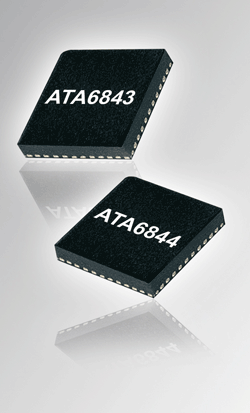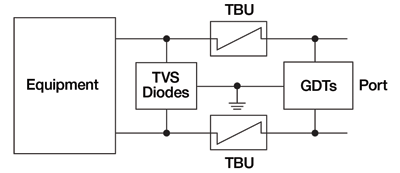Industrial applications need a broad variety of components, and here we’ll look at a few especially interesting ones.
Silicon Labs (www.silabs.com/industrial) has a number of interesting ICs pertaining to industrial control. The company’s low-power MCUs come with sub-GHz wireless transceivers and capacitive touch-sense. Factory and industrial automation applications involve monitoring temperature, strain, voltage, current, distance, pressure, and flow, and harsh operating environments demand extreme care in interfacing. Silicon Labs’ multichannel Si84xx digital isolators provide high-voltage isolation (1-, 2.5-, and 5-kV isolation) in small form factors, enabling precise measurement and control in harsh environments. The digital isolators use a novel RF isolation architecture fabricated in standard CMOS in one-to-six-channel configurations one-third the size of optocoupler solutions, and they reduce BOM cost.
The Si84xx digital isolators, Si82xx isolated gate drivers, and Si85xx current sensors have patented isolation and high-voltage technology and are often used in industrial switch-mode power supplies. The industrial-grade C8051Fxx MCUs operate up to 125C and have CAN 2.0B and LIN 2.1 interfaces, a precision oscillator, and a 12-bit A/D converter. They run on a 1.8 to 5.25-V supply.

Fig. 1: Motor control can be highly integrated.
Small motors (less than 300 W) are used in a wide variety of industrial applications, and their high-voltage motor controllers require reliable isolation to protect both staff and equipment. Silicon Labs’ combined MCU and isolator products offer high integration and reliable low-power operation (see Fig. 1 ). They offer motor control reference designs for dc, brushless dc, and stepper motors.
Analog Devices (www.analog.com/circuits) has launched an updated version of its Circuits from the Lab (CftL) reference circuits design support program with analog, RF, and mixed-signal system designs. Unlike reference designs that may skim the surface of many different applications, ADI’s more than 150 reference circuits provide comprehensive documentation that may include a range of time-saving items such as test data, schematics, BOM data, layout files, device drivers, and evaluation hardware. The detailed yet easy-to-understand building blocks are designed and tested for quick system integration to help engineers save days or weeks of research and design time.
Atmel (www.atmel.com) has launched the ATA6843 and ATA6844 gate driver ICs for automotive BLDC motor-control applications but I don’t see what they wouldn’t fit some industrial apps just as well. The three-phase drivers operate at chip temperatures of up to 200°C and support motors with Hall sensors as well as sensorless designs. They yield 200-mA peak current for each output driver. The chips include a charge pump to provide gate voltages for high-side drivers and to supply the gate of the external battery reverse-protection NMOS FET (see Fig. 2 ). They feature a watchdog timer, a LIN port, and comprehensive protection and diagnostic functions, such as monitoring of overtemperature, overvoltage, undervoltage, short-circuit conditions, and charge-pump failures. They cost just $2.10 ea/10,000.

Fig. 2: Gate driver ICs include a charge pump and voltage regulator.
RS-485 is still used in a broad array of industrial applications, and Bourns (www.bourns.com) has developed an advanced three-stage protection solution for RS-485 ports that includes TVS diodes, Transient Blocking Unit (TBU) devices, and one or more gas discharge tubes (GDTs), as shown in Fig. 3 . TVS diodes provide overvoltage protection. To protect the TVS diode array against ac power cross events or large transients as well as overcurrent protection for the RS-485 driver, a TBU fast current limiter is placed in each line.

Fig. 3: Advanced design protects RS-485 ports.
The TBUs provide sub-microsecond protection by transitioning to a protected state with very high impedance within 1 μs if the line current should exceed 100 mA. Finally, to protect the TBU devices from high-voltage transients, a MOV-10D201K is placed on the line side of the node. These MOVs are designed to coordinate with the TBU device to provide extremely fast voltage protection. If sustained power cross events are anticipated, an additional fuse may be placed in each line to open in case of sustained MOV operation.
Jim Harrison
Advertisement
Learn more about Analog DevicesAtmel, USABournsSilicon Labs





